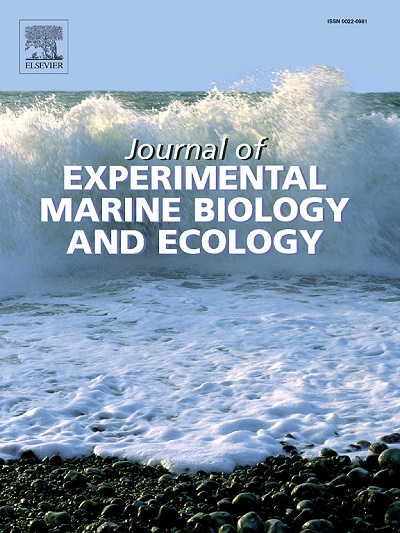Automatic periphyton sampler (APS): A new technique for precise in-situ sampling of periphyton in aquatic environments
IF 1.8
3区 生物学
Q3 ECOLOGY
Journal of Experimental Marine Biology and Ecology
Pub Date : 2025-03-21
DOI:10.1016/j.jembe.2025.152098
引用次数: 0
Abstract
Periphyton are important component indicators in ecosystems, the traditional method of sampling periphyton is not only time-consuming and laborious, but difficult to quantify accurately, which easily causes sample loss and distorts data. On the other hand, the traditional method also requires high proficiency of researchers for sampling. At the same time, when a large number of samples of periphyton need to be collected, the traditional method is inefficient in sampling, so a unified and highly efficient sampling tool is desperately required. Here we present a simple structure, easy operation and low-cost sampling device, Automatic Periphyton Sampler (APS), that can be used to collect periphyton fastly and precisely in a fixed areas of different types of natural substrates. Periphyton from three different natural substrates were collected at different sites using both APS and traditional method, based on the comparison of chlorophyll a content, ash-free dry mass, cell counts, and taxonomic composition. The results show that the APS is more suitable for the periphyton sampling. The study demonstrates that the APS is a portable, efficient, and automated tool that significantly enhances the efficiency of periphyton sampling in the field, and saving labor and time. The new technique can reduce the reliance on researchers and overcome the issue of collecting samples of periphyton on unpickable and stable substrates. Furthermore, modifications can be made to adapt the APS to various natural substrates and field environments.

自动周围植物采样器(APS):一种用于水生环境中周围植物精确原位采样的新技术
周生植物是生态系统中重要的组成指标,传统的周生植物采样方法不仅耗时费力,而且难以准确量化,容易造成样本损失和数据失真。另一方面,传统方法对研究人员的抽样能力要求也很高。同时,当需要采集大量周生植物样本时,传统的采样方法效率低下,因此迫切需要一种统一、高效的采样工具。本文提出了一种结构简单、操作方便、成本低廉的采样装置——自动水藻采样器(Automatic Periphyton Sampler, APS),可用于在固定区域内对不同类型的天然基质进行快速、精确的水藻采集。通过比较叶绿素a含量、无灰分干质量、细胞计数和分类组成,采用APS法和传统方法在不同地点采集了3种不同天然基质上的周生植物。结果表明,APS更适合于周围植物的采样。研究表明,APS是一种便携、高效、自动化的工具,可显著提高现场周围植物取样的效率,节省人工和时间。新技术可以减少对研究人员的依赖,并克服在不可选择和稳定的底物上收集周围植物样品的问题。此外,可以进行修改以使APS适应各种天然底物和野外环境。
本文章由计算机程序翻译,如有差异,请以英文原文为准。
求助全文
约1分钟内获得全文
求助全文
来源期刊
CiteScore
4.30
自引率
0.00%
发文量
98
审稿时长
14 weeks
期刊介绍:
The Journal of Experimental Marine Biology and Ecology provides a forum for experimental ecological research on marine organisms in relation to their environment. Topic areas include studies that focus on biochemistry, physiology, behavior, genetics, and ecological theory. The main emphasis of the Journal lies in hypothesis driven experimental work, both from the laboratory and the field. Natural experiments or descriptive studies that elucidate fundamental ecological processes are welcome. Submissions should have a broad ecological framework beyond the specific study organism or geographic region.
Short communications that highlight emerging issues and exciting discoveries within five printed pages will receive a rapid turnaround. Papers describing important new analytical, computational, experimental and theoretical techniques and methods are encouraged and will be highlighted as Methodological Advances. We welcome proposals for Review Papers synthesizing a specific field within marine ecology. Finally, the journal aims to publish Special Issues at regular intervals synthesizing a particular field of marine science. All printed papers undergo a peer review process before being accepted and will receive a first decision within three months.

 求助内容:
求助内容: 应助结果提醒方式:
应助结果提醒方式:


